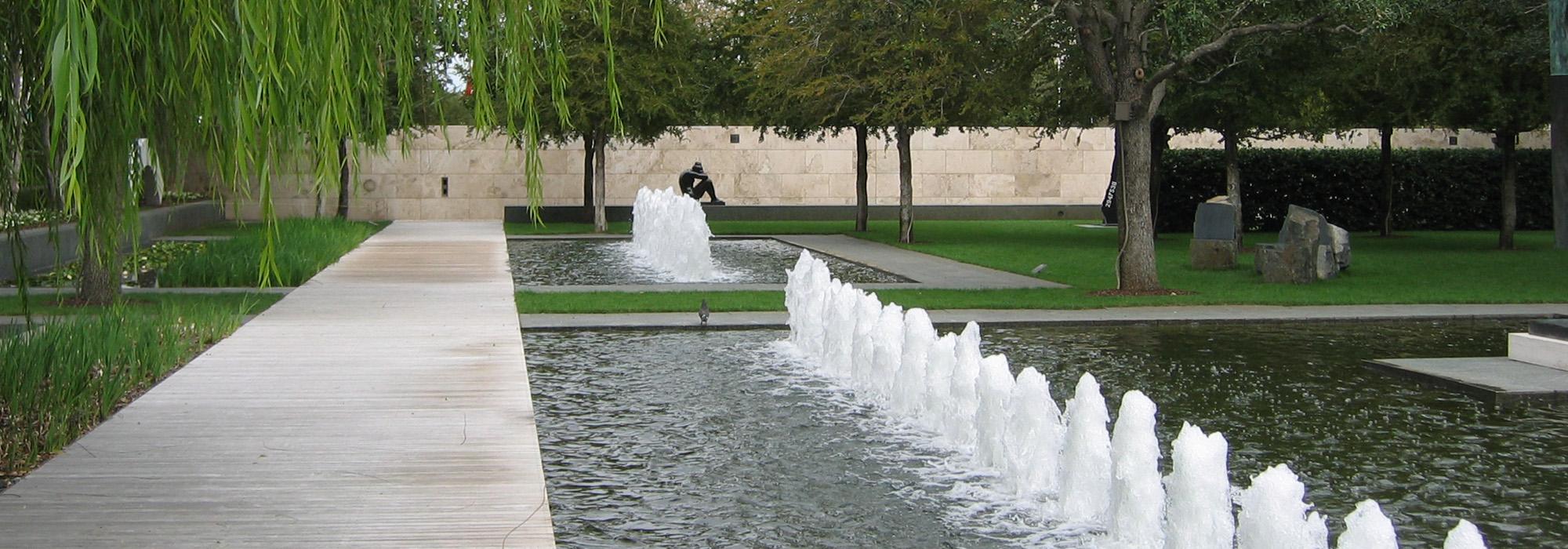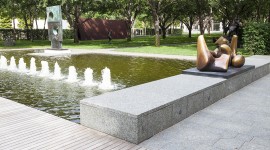Museum Tower: "attack" on the Nasher Sculpture Center's garden, building & art
As Nasher Sculpture Center landscape architect Peter Walker sees it, the intense light reflecting off Museum Tower, the 42-story, $200 million condominium complex across from the center, is an "attack on the garden and on the building and on the art." According to Walker, "What the reflection does is very much like putting light through a magnifying glass, it essentially burns everything that it sees."
Pete Walker is not given to histrionics and hyperbole. He is, in fact, a well-respected and influential presence in the world of landscape architecture, known for award-winning, high profile projects including the 9/11 Memorial at Ground Zero in New York, among many career highlights. In an interview taped to accompany this article, he provides valuable background and context about the project's genesis and its current predicament. This is important, because Walker's contributions were integral to the project but his name is rarely mentioned in the Nasher dispute media coverage (as I've previously written, landscape architects and their work are often treated dismissively if not ignored).
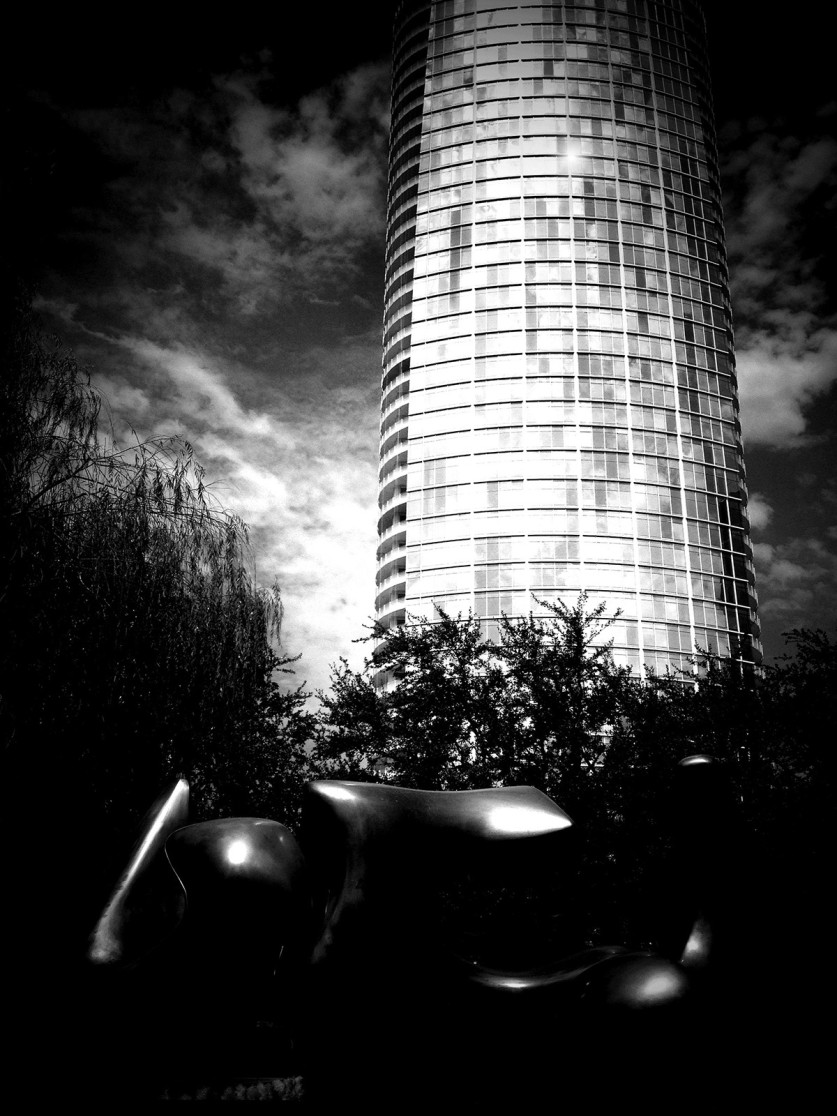
The Center, which replaced an asphalt parking lot, opened in 2003 and displays work from the world-renowned art collection amassed by Raymond and Patsy Nasher. Located in the Dallas Arts District, it features a 55,000 square foot building by architect Renzo Piano, with a carefully engineered ceiling grill that only admits northern light, and Walker's two-acre sculpture garden. Walker has worked on many sculpture gardens - public, private, intimate and grand - it's one of the many things for which his firm is known. Each, he says, presents "a new learning curve" with its own set of issues, challenges and curatorial priorities. Nasher didn't insist on a specific design vision, leaving that to the professionals, though he was part of the discussions. The result was an immediate success.
The Center's design is essentially a series of contiguous indoor and outdoor galleries defined by walls, hedges and allées of trees that run along a north-south axis. However, unlike the building's galleries, which feature some walls that can be moved to suit curatorial and exhibition priorities, the garden's galleries formed by the hedges and trees are harder to rearrange. That means, in addition to challenging lighting and security considerations, the landscape architect's design has to accommodate numerous exhibition possibilities.

Unfortunately, since October 2011, light reflecting off the tower has undermined the harmonious environment created by Walker and Piano in very demonstrable ways. Museum Tower, says Walker, redirects "hot light" through the building's grill creating patterns on the walls, the paintings, and the sculptures where "Renzo was trying to achieve ... an even lighting." A site specific work by James Turrell has been declared destroyed because the tower intrudes directly into the sculpture's controlled view. And, the light is affecting plant materials in its path, with immediate and long-term implications.
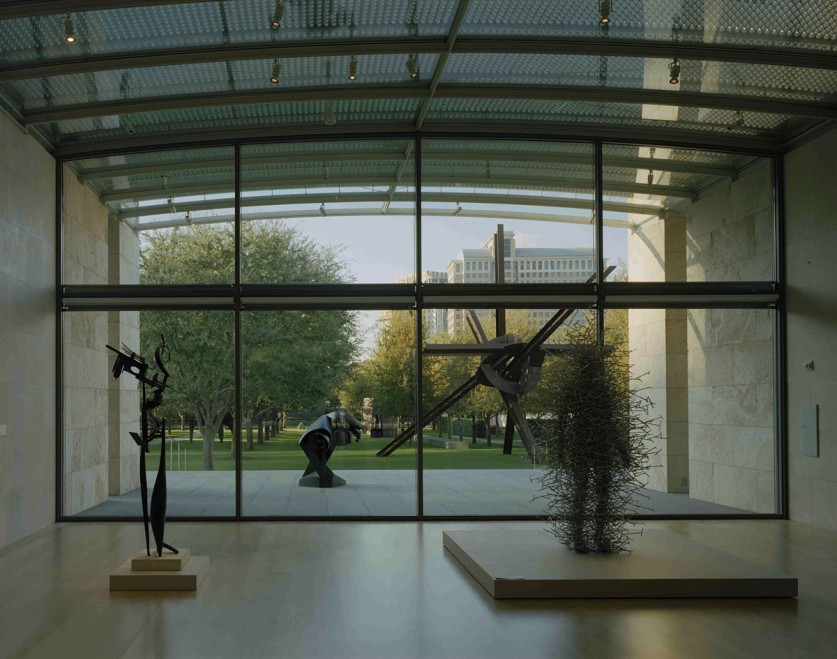
Robert Moon, a PhD horticulturalist, has consulted to the Nasher since 2000 and still monitors the garden three times a week as he has since it opened. In a March 14, 2012 letter to the Nasher's administrator, Moon wrote, "The amplified, reflected light causes heat injury to all plants - turf, trees, shrubs, ground cover - whatever plant is in the path of the reflected light. Damage to plants can occur anytime of the year." The letter includes a summary of temperature readings taken two days earlier. The air temperature on that clear, cloudless day was 78 degrees, while "hot spots" in shaded and exposed areas were as much as 21-25 degrees hotter. Subsequent monitoring by museum officials, daily at 2-3 PM from April 2 - June 21, 2012, documents consistently higher temperatures in "hot spots" ranging up to more than 40 degrees over the surrounding air temperature. Moon notes, "The symptoms of heat injury on plants include leaf scorching, sunburn on branches and stems, leaf drop, acute leaf death and shoot and root inhibition. Many of these symptoms have already been observed in the garden..."
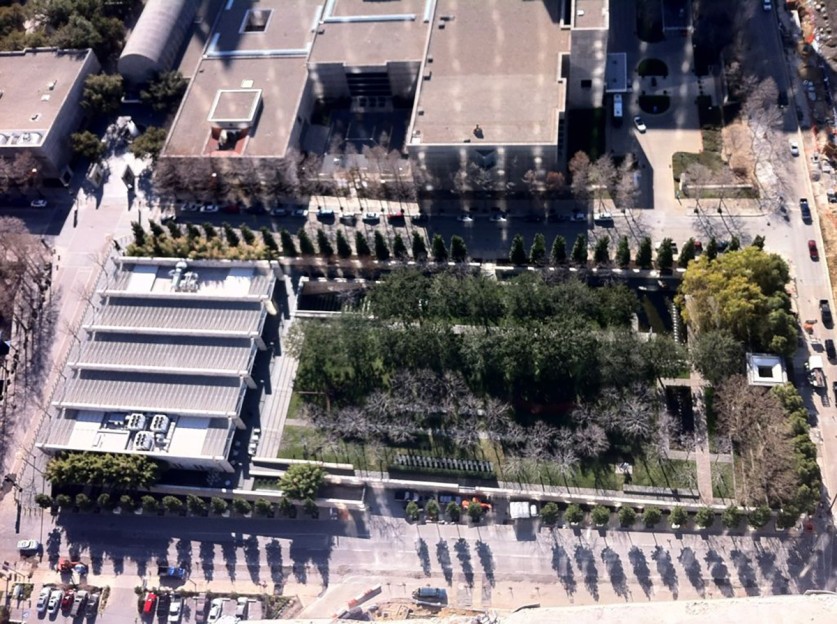
A tower spokesperson strongly disputes Moon's conclusions. In an email to my foundation, Rebecca Shaw of Spaeth Communications wrote: "Noted Texas horticulturalist and author ... Scott Ogden examined the Nasher Sculpture Garden three times between April and September of this year including a review of the landscaping with the Nasher's horticulturalist, Dr. Robert Moon ... Also, an agronomist for a PGA championship golf course and a turf expert visited the garden twice this summer and confirmed Mr. Ogden's report that the garden is healthy and beautiful despite a variety of grass that's not normally successful in Texas."
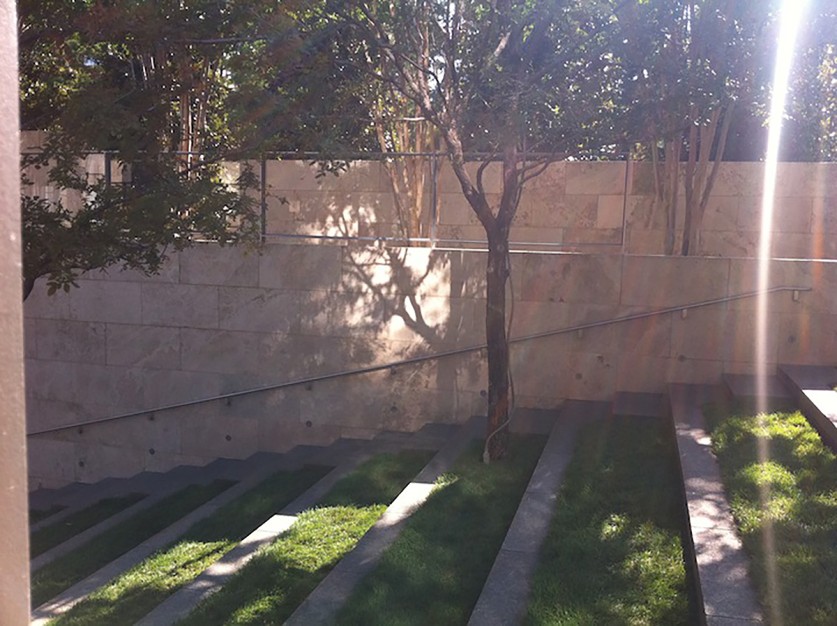
Shaw sent Ogden's report, which concludes: "There was no indication that reflections from Museum Tower had caused or were causing adverse effects to plants in the Nasher landscape." Significantly, however, his report does not chronicle, dispute or address any of the documented temperature variations central to the matter.
Moon sees this lack of attention to the temperature variations as a "huge failing" - it ignores the problem by not reporting on it. Instead, he notes, tower officials criticize the choice of turf grasses, to which Moon responds: "We had eight years of experience taking care of the garden and making it look good," which changed once the tower was built. The turf, for example, which used to take at most 7-10 days to recover, now takes 21-30 days; and that slow recovery means, "We're constantly behind."
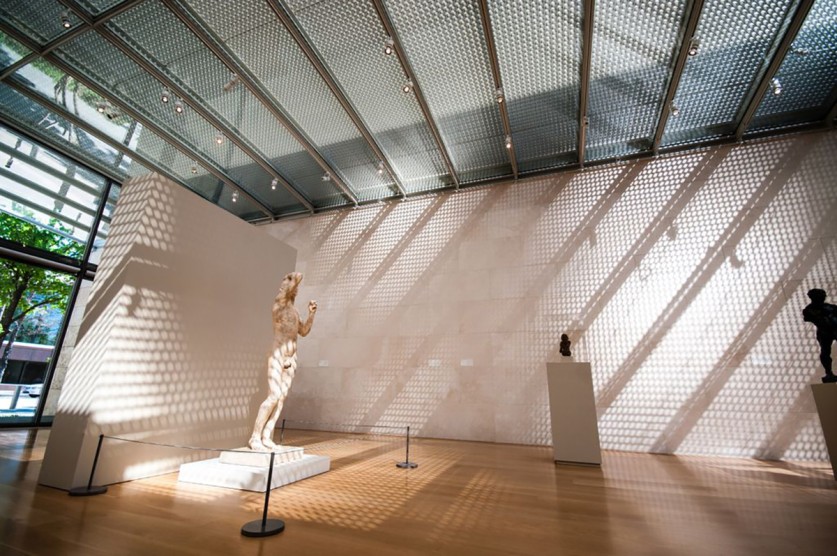
According to Walker, holly hedges integral to the garden's geometry have been burned in places, oaks in "hot spots" produce smaller leaves affecting the overall shape of the trees and their lifespans, and burning of the cedar elms will lead to defoliation. "We've put in wonderful new soil, irrigation, technically everything we've done to make this grow and thrive is being attacked ... just where the light is hitting ... [the damage] is visible and it will get worse, it will not get better."
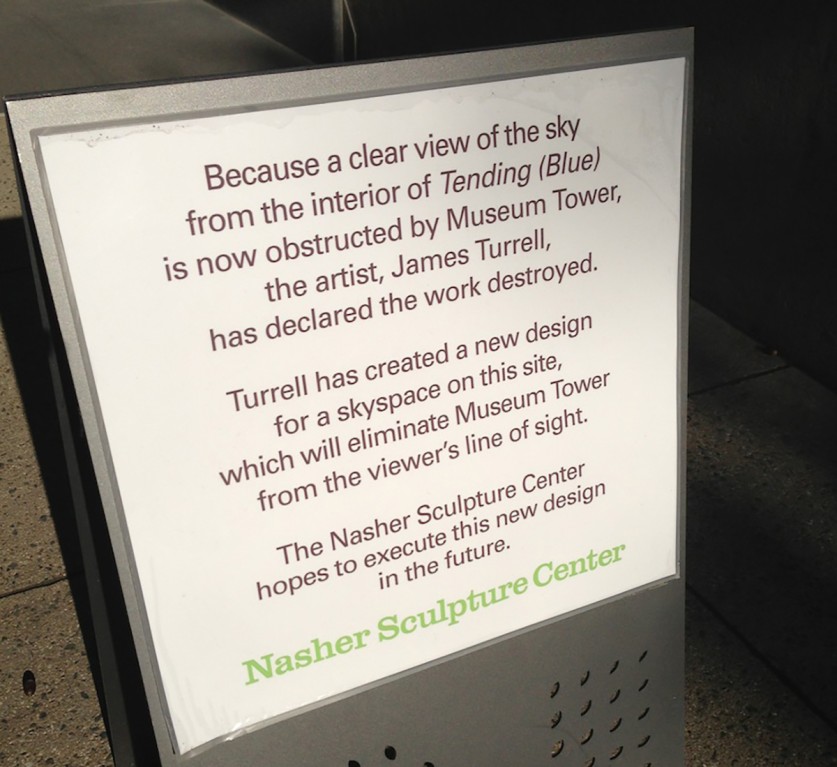
Earlier this year, Dallas Mayor Mike Rawlings appointed attorney Tom Luce to mediate the dispute. Several potential solutions were circulated including a $7-10 million system of mechanical louvers on the tower's west side to cut down on glare, (which tower officials rejected), or multi-million dollar adjustments to the Nasher's roof (which would not address the garden's "hot spot" issue). Six months later on October 24, Luce resigned in frustration. According to the Dallas Morning News, "he blamed his resignation on Richard Tettamant, administrator for the Dallas Police & Fire Pension System, which owns the $200 million" Museum Tower project. The article quotes a Luce email to Tettamant: "Richard, recent events have made clear that the conditions and spirit under which I agreed to serve to help find a mutually beneficial solution for all parties are not being adhered to by you."
Museum Tower officials are understandably distressed - they sank $200 million of pension funds into the building but, according to the Dallas Morning News, have "sold about 15 of [the tower's] 115 units." However, the tower officials' short-term crisis in selling real estate pales in comparison to the Center's long-term stewardship challenges. It's because of this that my foundation included the Nasher on our Landslide annual thematic compendium of threatened and at-risk landscapes. The 2012 theme - Landscape and Patronage - honors collaborations like the one between Raymond Nasher, Peter Walker and Renzo Piano that have contributed to our shared landscape heritage and highlights how delicate that legacy can be, whether the landscape is historic or relatively new.
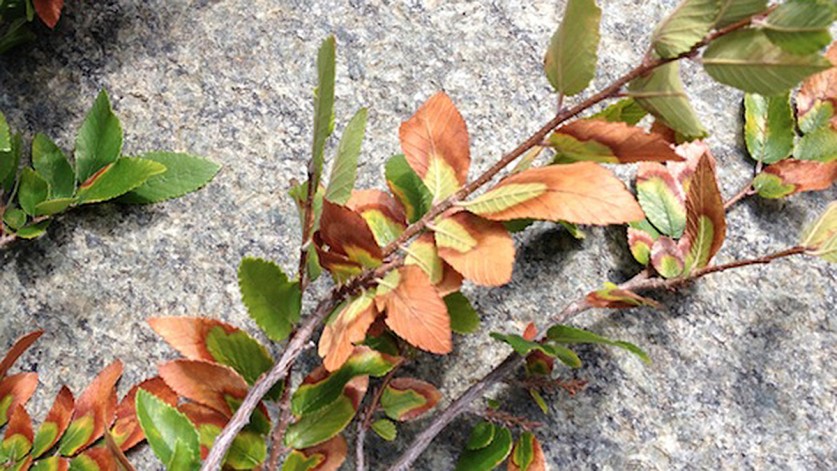
In his statement in the Nasher Sculpture Center Handbook, Raymond Nasher wrote: "[O]ur intent was to create an urban cultural retreat surrounded by the energy of the large city but offering a serene and beautiful oasis for the contemplation and enjoyment of art." Unfortunately, that serenity has been replaced by a tempest, and a good bit of denial about the impact on the landscape. I agree with Walker's final remark in the interview, for anyone to say, "There's no problem ... that's beyond my comprehension."
This blog first appeared on the Huffington Post website on November 26, 2012.



